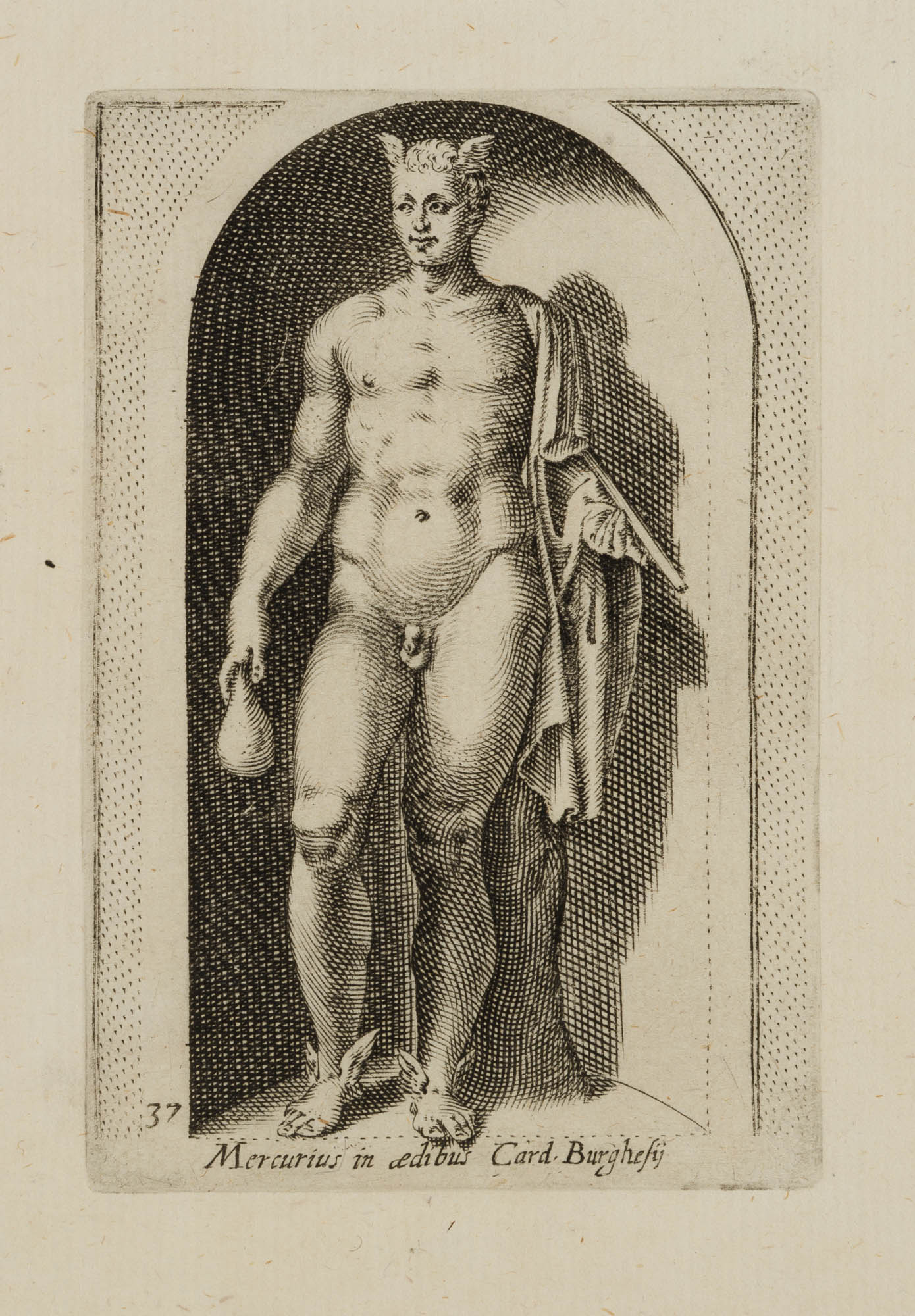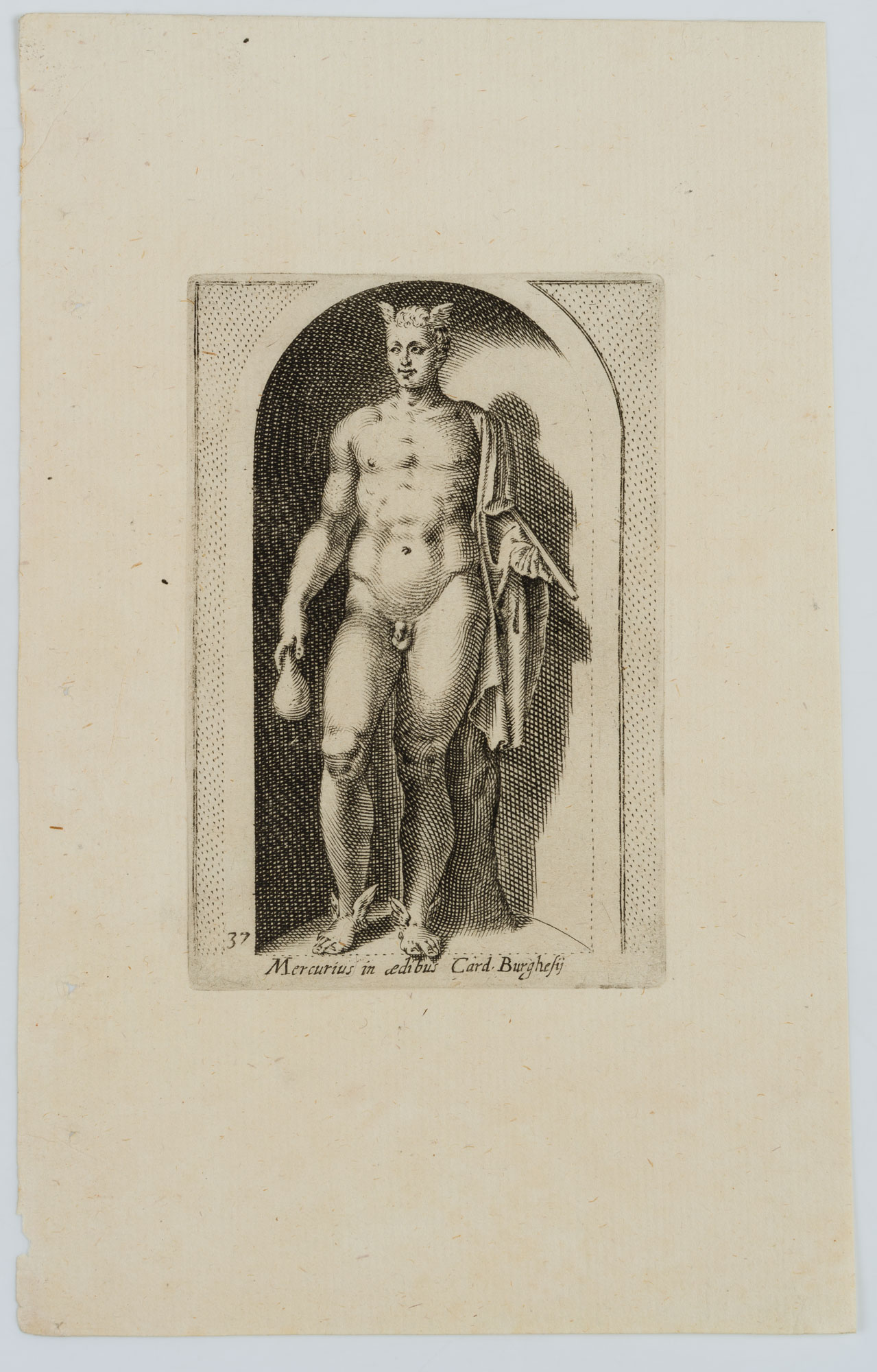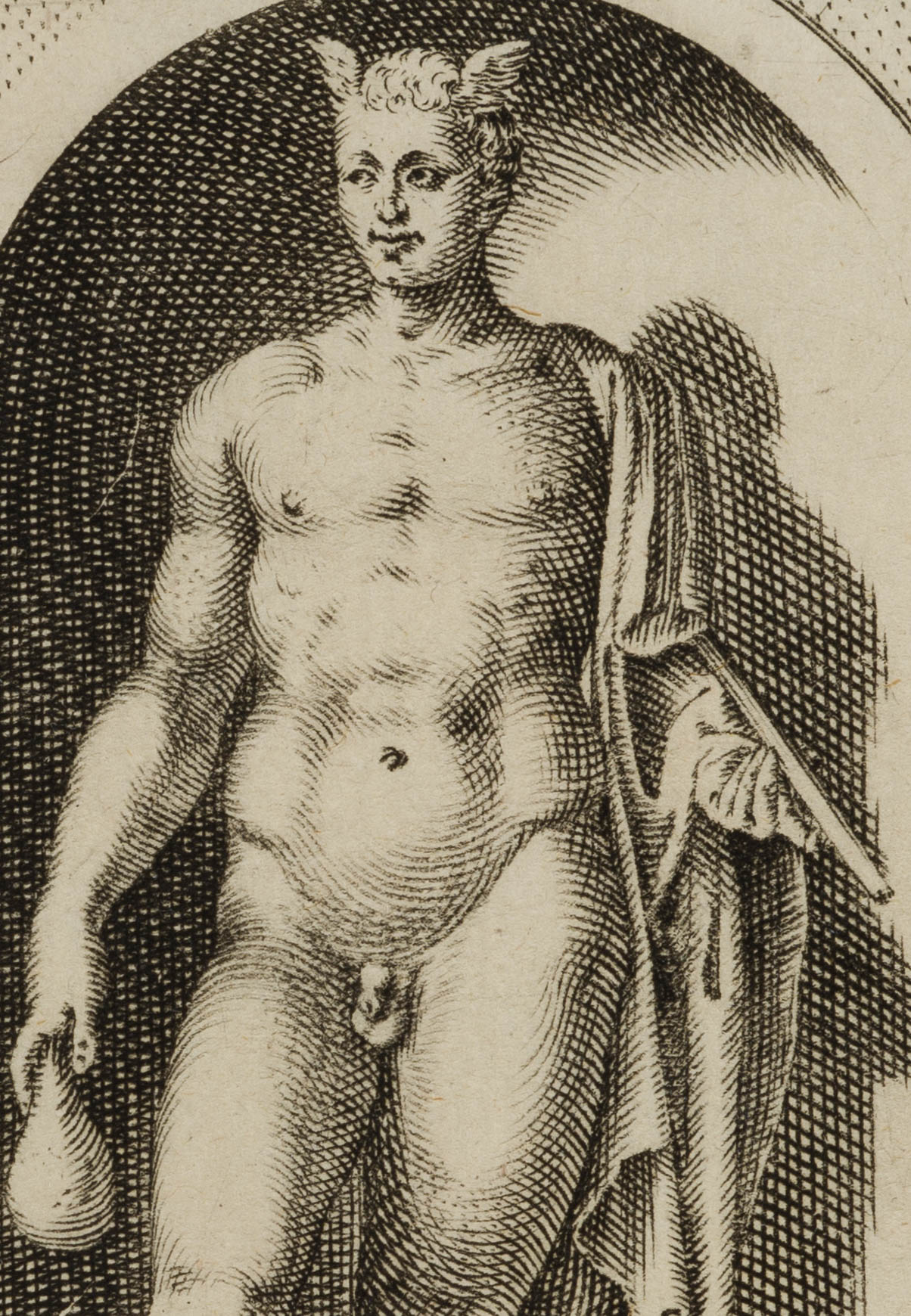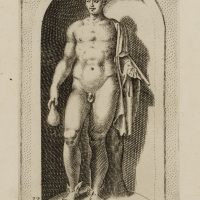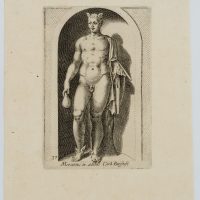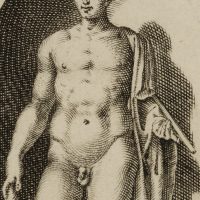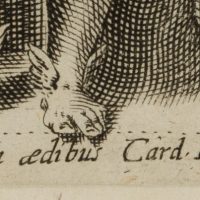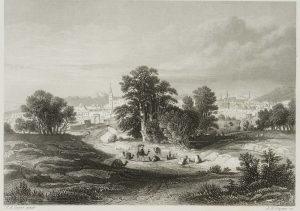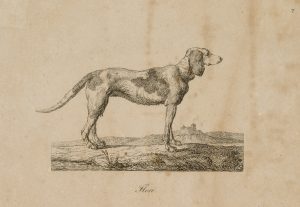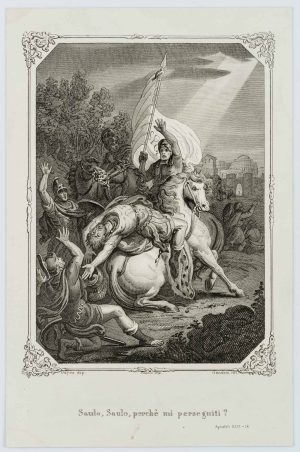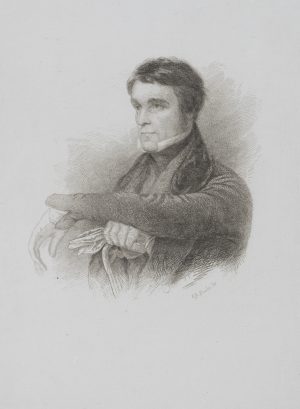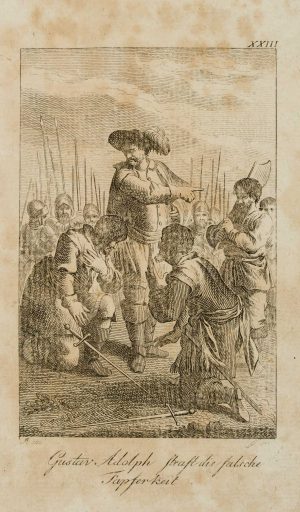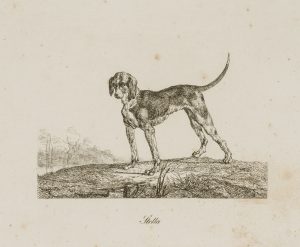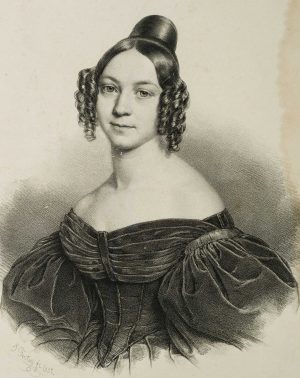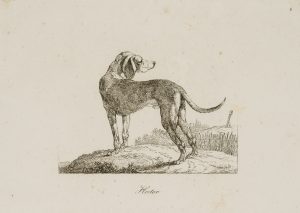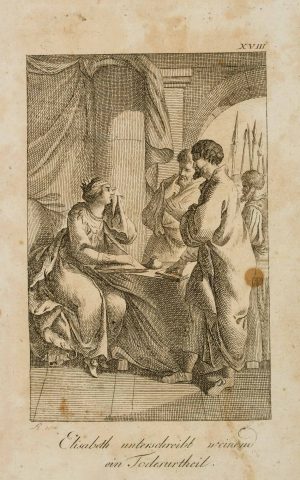Philippe Thomassin (1562 Troyes – 1622 Rom), Darstellung Merkurs nach einer antiken Statue, aus der Sammlung Borghese, Platte 37, um 1610, Kupferstich
- Technik: Kupferstich auf Büttenpapier
- Datierung: um 1610
- Beschreibung: Nach antiker Statue in einer Konche; Merkur, der Götterbote und Gott der Händler und Diebe, mit Attributen: Flügelschuhen, Hermesstab und einem Geldbeutel, den er in der rechten Hand hält. Unter der Darstellung innerhalb der Druckplatte bezeichnet: “Mercurius in aedibus Card. Burghesij”. Aus: Antiquarum statuarum urbis Romae liber primus, P. Thomassin, 1610. Es gilt nach erscheinen des Stichwerks Giovanni Battista de Cavalieri “Antiquarum Statuarum Urbis Romae Tertius et Quartus Liber” (1594) als das erste Werk mit selbstständigen Stichen nach antiken Statuen – von Philippe Thomassin persönlich gezeichnet und gestochen.
Der französische Kupferstecher war der erste Lehrmeister Jacques Callots; er schuf über 430 Stiche, darunter viele nach Gemälden italienischer Meister wie Michelangelo.
Insgesamt handelt es sich um die Illustration von 50 – durchweg in Konchen aufgestellten – antiken Statuen. 23 davon stammen aus der Sammlung Borghese, 5 aus der kapitolinischen Sammlung, jeweils vier aus der Sammlung Medici und aus der Sammlung Farnese, 3 aus Rom: Palazzo Apostolico, Cortile del Belvedere, Statuenhof sowie eine aus der Sammlung Cesarini. Die übrigen sind ohne Angabe des Standortes.
Zur Datierung: Als Terminus post quem gilt 1610 aufgrund der Existenz einer Statue der Sammlung Borghese aus dem Nachlass des Guglielmo della Porta (Verkauf 1609 an Giovanni Battista Borghese); terminus ante quem: 1622.
Aus dem Nachlass des Antiquars Rosenthal München / Amsterdam. - Schlagworte: Mythologie, Italien, Figürlich, 1600-1649
- Größe: 22,4 cm x 14,2 cm, Darstellung: 12,2 cm x 8,0 cm
- Zustand: Guter Zustand. Die Darstellung macht einen sehr guten Eindruck. Das Blatt ist altersbedingt minimal verfärbt, linke Blattkante mit Spuren der Herauslösung aus der Bindung.
English Version:
Philippe Thomassin (1562 Troyes – 1622 Rom), Depiction of Mercury after an antique statue, from the Borghese Collection, plate 37, c. 1610, Copper engraving
- Technique: Copper engraving on
- Date: c. 1610
- Description: After ancient statue in a conch; Mercury, messenger of the gods and god of merchants and thieves, with attributes: Winged shoes, Hermes’ staff and a purse which he holds in his right hand. Inscribed below the depiction within the printing plate: “Mercurius in aedibus Card. Burghesij”. From: Antiquarum statuarum urbis Romae liber primus, P. Thomassin, 1610. After the publication of Giovanni Battista de Cavalieri’s engraving “Antiquarum Statuarum Urbis Romae Tertius et Quartus Liber” (1594), it is considered to be the first work with independent engravings after antique statues – personally drawn and engraved by Philippe Thomassin.
The French engraver was Jacques Callot’s first teacher; he created more than 430 engravings, many of them after paintings by Italian masters such as Michelangelo.
In total, the work involves the illustration of 50 ancient statues – all of them placed in conchs. 23 of them come from the Borghese Collection, 5 from the Capitoline Collection, four each from the Medici Collection and the Farnese Collection, 3 from Rome: Palazzo Apostolico, Cortile del Belvedere, Statuary Courtyard and one from the Cesarini Collection. The others are without indication of location.
On the dating: 1610 is considered the terminus post quem due to the existence of a statue from the Borghese collection from the estate of Guglielmo della Porta (sold to Giovanni Battista Borghese in 1609); terminus ante quem: 1622.
From the estate of the antiquarian Rosenthal Munich / Amsterdam. - Keywords: 17th century, Figurative, Mythology, Italy,
- Size: 22,4 cm x 14,2 cm (8,8 x 5,6 in), Depiction: 12,2 cm x 8,0 cm (4,8 x 3,1 in)
- Condition: Good condition. The image makes a very good impression. The sheet is minimally discoloured due to its age, left edge of the sheet with traces of detachment from the binding.

